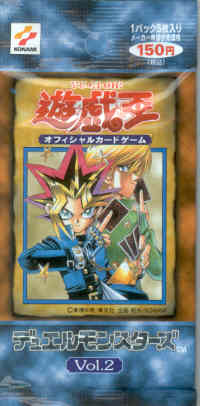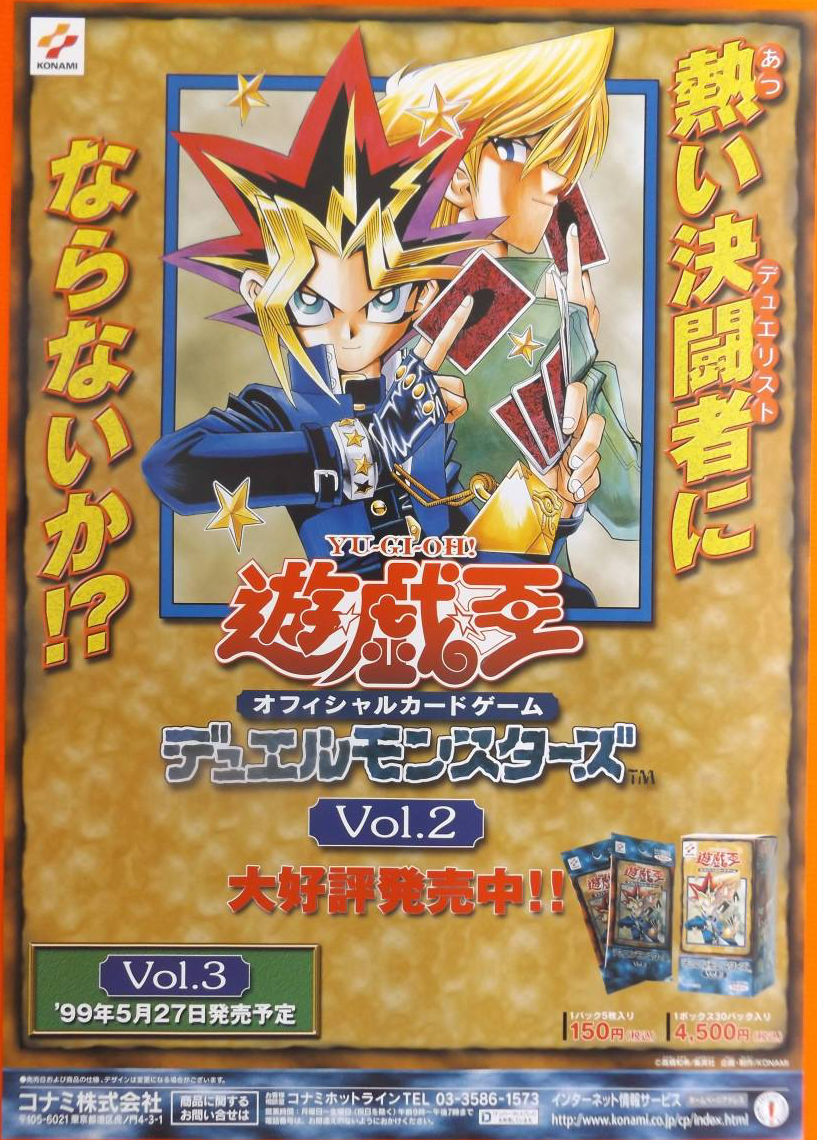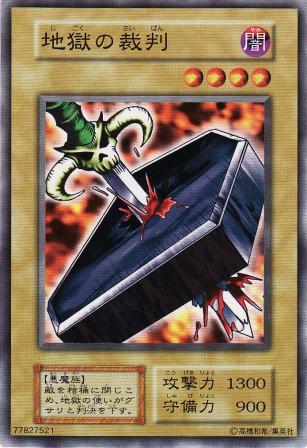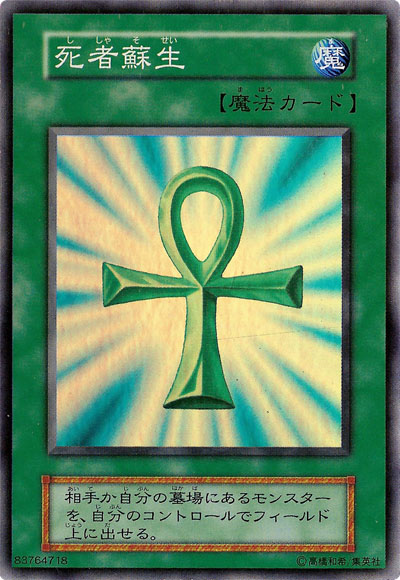VOLUME 2: DO YOU WANT TO BE A PASSIONATE DUELIST?!!
Volume 2, or Vol.2, was the second Core Booster to released for the Yu-Gi-Oh! OCG. New monsters and Magic Cards were now available for the enterprising player to add to their Decks. These additions would help support the cards released for the first section of Series 1 while also pushing the game further than before. This would be the theme for each successive Vol. for the rest of Series 1.
(There will be a tl;dr version of this below)
Vol.2's card composition is similar to Vol.1's. 30 monsters and 10 Magic/Trap Cards to fill the set. The main difference is that a slice of the pie now belongs to Fusion Monsters. Furthermore, there are no Trap Cards in Vol.2. This wouldn't be the last time something like this happened.
Though unmarked, Normal and Equip Magic Cards are both split equally in this set. Rarity also remains the same as in Vol.l.
MONSTERS
Unlike Vol.1, Vol.2's monster lineup isn't as expansive in terms of impact (this is the second volume), Stronger monsters existed, but most of them were no longer viable or were budget in the face of the stronger monsters released in the earlier product. Furthermore, the specialization that began in the Starter Box saw completion in this set. Now a monster's strength isn't in how much utility it has, but in whether it's strong in either Attack and/or Defense Power.
 Curse of Dragon (カース・オブ・ドラゴン Kāsu Obu Doragon) is the perfect example of this phenomenon. The Ultra Rare monster from this Core Booster and the strongest monster in total Power, it's still inferior to Blue-Eyes White Dragon and the Vol.1 Ultra Rare duo. As the first Level 5 monster in the game, it's closer to the multitude of lower level monsters in its impact. To understand this, these two ladies should make it clear.
Curse of Dragon (カース・オブ・ドラゴン Kāsu Obu Doragon) is the perfect example of this phenomenon. The Ultra Rare monster from this Core Booster and the strongest monster in total Power, it's still inferior to Blue-Eyes White Dragon and the Vol.1 Ultra Rare duo. As the first Level 5 monster in the game, it's closer to the multitude of lower level monsters in its impact. To understand this, these two ladies should make it clear.Mystical Elf (ホーリー・エルフ Hōrī Erufu "Holy Elf") is more than just one of Yugi's monsters during the Duelist Kingdom arc. She is a strong defender with 2000 Defense Power able to wall most monsters. She is also a Magic User like Aqua Madoor, making her able to use both Yami and Book of Secret Arts to boost to a 1300/2500 Power total at minimum. Otherwise, Mystical Elf remains a monster lacking in offense.
Spirit of the Harp (ハープの
Of the 30 monsters in this Core Booster, 8 have never been reprinted in Japanese:
("Blue-Eyed Silver Zombie", "Dorover", "Holograh", "Solitude", "Stone Armadiller", "Supporter in the Shadows", "The Bewitching Phantom Thief", and "Wood Remains")
Of these 8, Blue-Eyes Silver Zombie and Stone Armadiller would come to the TCG while the other 6 remain in Japan.
INTERESTING FUSION TRIVIA
- Karbonala Warrior's (カルボナーラ
戦 士 Karubonāra Senshi "Carbonara Warrior")'s name is based off of the Italian pasta dish Carbonara. - Dragoness the Wicked Knight's (
魔 装 騎 士 ドラゴネス Masōkishi Doragonesu Demon-Equipped Knight Dragoness) Fusion Material Armaill and One-Eyed Shield Dragon share the same Attack/Defense Power values. - Zombie Warrior (アンデット・ウォーリアー Andetto Wōriā "Undead Warrior") is the first Fusion Monster to share a Fusion Material (Skull Servant) with another Fusion (Flame Ghost).
- Kamionwizard (カオス・ウィザード Kaosu Wizādo "Chaos Wizard"), as later members of the Series would, uses a LIGHT (Mystical Elf) + DARK (Curtain of the Dark Ones) monster as Material.
MAGIC
Vol.2's Magic lineup wasn't much different from Vol.1 in quantity. 10 Magics compared to 9, what had been Trap Hole in Vol.1 was replaced by another new Magic Card. As mentioned earlier, this was the first Core Booster to miss one of the three kinds of cards in "Yu-Gi-Oh!".
EQUIPS
Continuing from Vol.1, Vol.2 introduces 5 new Equip Magic Cards to the game. This brings us to 10 Tribe-oriented Equips, but these wouldn't be as impactful as the last 5 were. All but 1 had major flaws:
Holograh (ホログラー Horogurā) is the only Machine Tribe monster to be introduced in Vol.2 Thus, that also makes it the only target for Machine Conversion Factory (
Kumootoko (
 Man Eater (マンイーター Man Ītā) is a poor target for Vile Germs (
Man Eater (マンイーター Man Ītā) is a poor target for Vile Germs (Now this combination has some value. With its 1300 Attack Power, Trial of Nightmare increases to 1600 Attack Power when equipped with Dark Energy (
Raise Body Heat (
MAGIC EXPANSION
Along with the Equips came more Magic Cards. First, we again note the upgrade of burn and healing Magic Cards with the additions of the Common Goblin's Secret Remedy (ゴブリンの
Like Remove Trap however, you also couldn't target set Magic Cards as they weren't considered to be either a Magic or Trap Card. Take note of this.
Swords of Revealing Light (
In the regular game, this card's effect serve two purposes: 1) to protect your own Life Points and 2) to see what your opponent has placed face-down so you know if attacking is safe. Both effects synergize to create space for yourself or your opponent if under pressure as well as allowing you to prepare for future turns. You can also prevent your opponent from using Dark Hole or Raigeki to clear your side of the field if your Life Points are low enough to lose.
Though Swords is one of the iconic cards of the Yu-Gi-Oh! card game, there is one even more iconic. Monster Reborn (
That Konami allowed this card to be a Super Rare in Vol.2 is a testament more to the limits of Magic Cards in the OCG Official Rules. Despite its historic status, Swords of Revealing Light can be argued as the better card at this point. While Monster Reborn does revive a monster, that monster can be destroyed by monster removal. There is no answer to Swords of Revealing Light during this format.
CONCLUSION
The second Volume continued where the first left off while creating the first offical format in the game's history. The offensive might and defensive prowess of monsters improved at the low levels, new Equips brought up more Tribes from middling status, and new Magic Cards like Monster Reborn and Swords of Revealing Light would become staples no matter how many copies one may have. April 1999, also known as the Official Rules Format, would prove to be an official format never again replicated by Konami or the player base.
TL;DR
- Very little changed in terms of card and rarity composition. The one Trap Card of Vol.1 is replaced with another spell
- Curse of Dragon is a strong card, but inferior to the high level monsters that came before it. It would find itself naturally blocked by the 2000 Defense Power walls.
- Mystical Elf is better than Spirit of the Harp despite sharing everything but Tribe; Spirit of the Harp's Common status meant that it would be used at 3 much more often.
- Uraby became the backbone of many Decks thanks to its great synergy with Raise Body Heat.
- De-Spell is the first Magic Remover in the game, but the way Magic Card activations work meant that it was difficult to know when it was best to activate it.
- Swords of Revealing Light's multi-faceted effects granted its user great defensive power and offensive flexibility by both protecting and revealing the opponent's monsters.
- Monster Reborn's recovery ability and access to both Graveyards meant that one could end games in the right circumstances, but it was mostly used to circumvent removal during this period.





















Comments
Post a Comment